
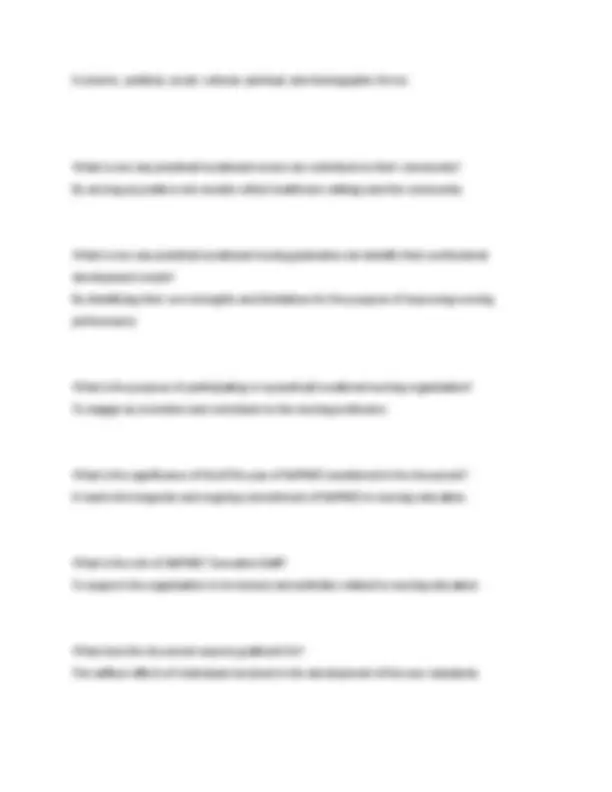

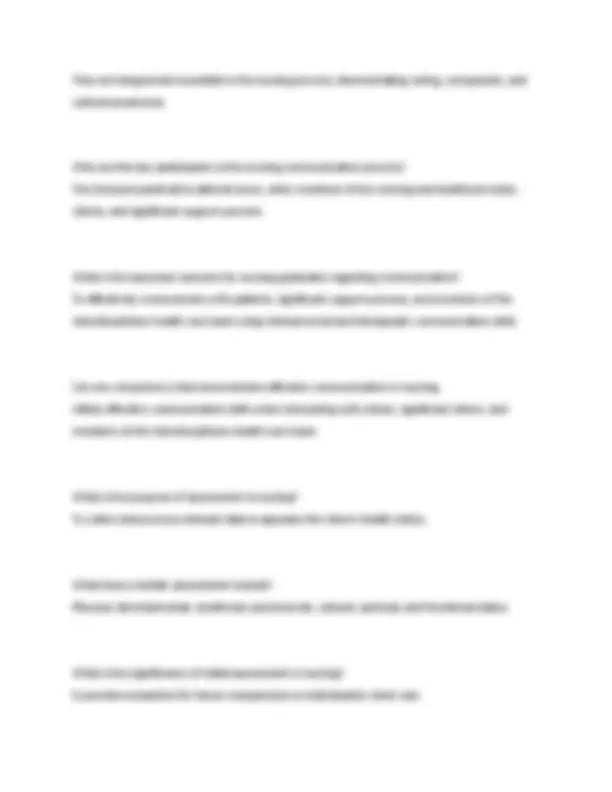
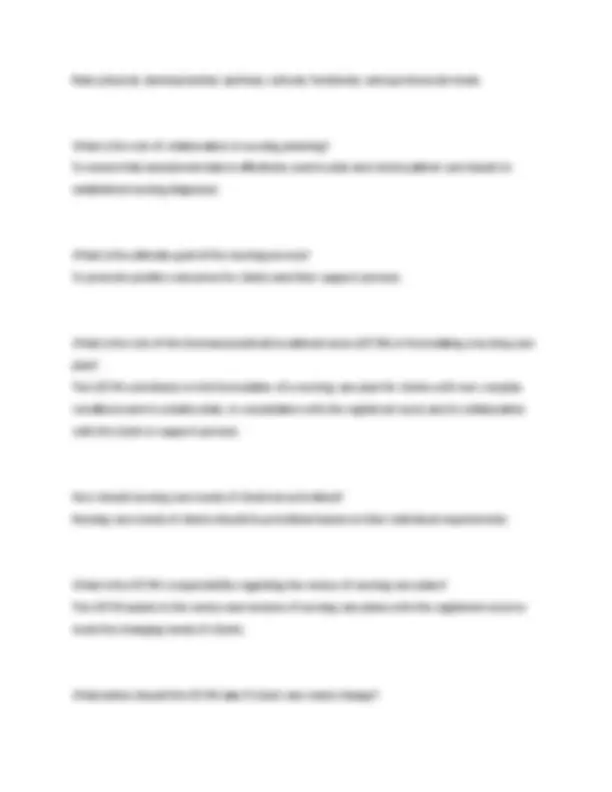
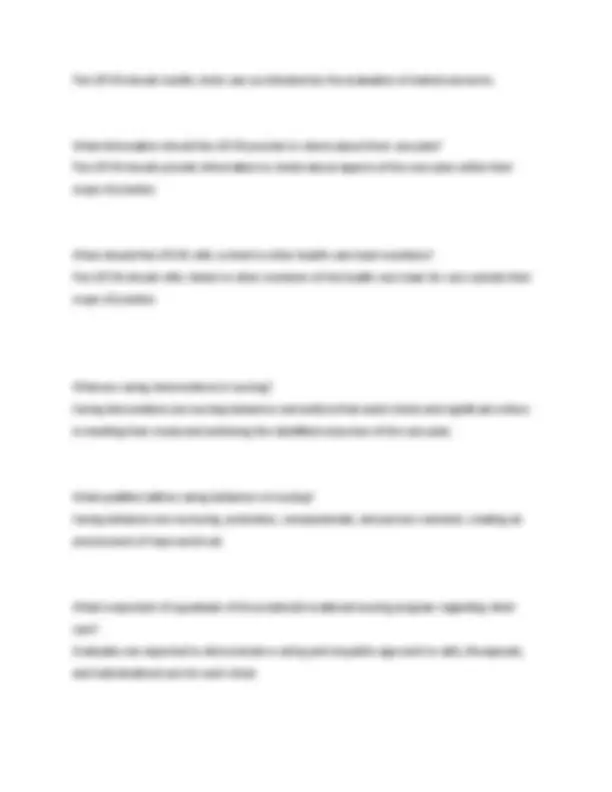
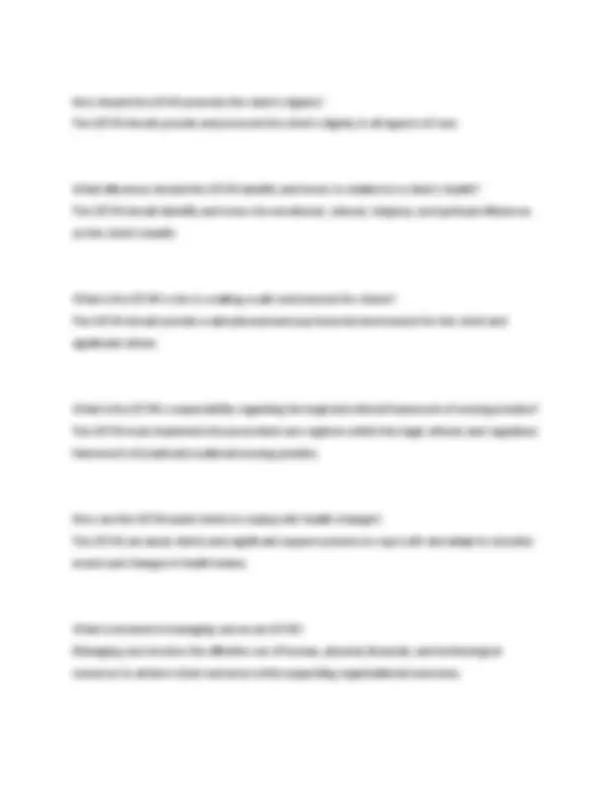
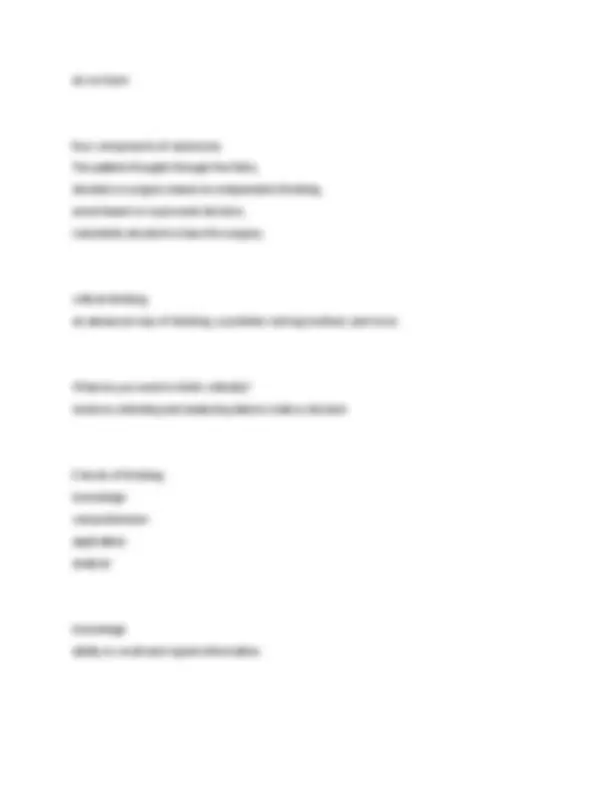
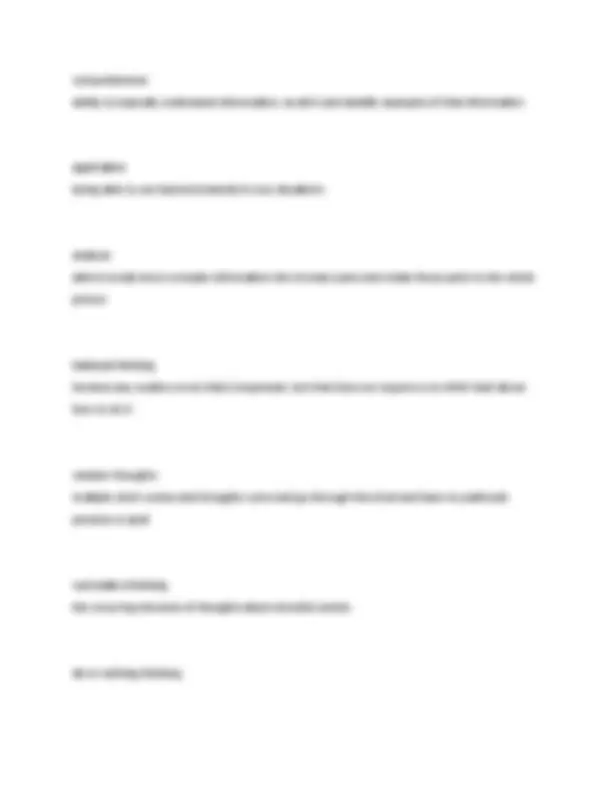
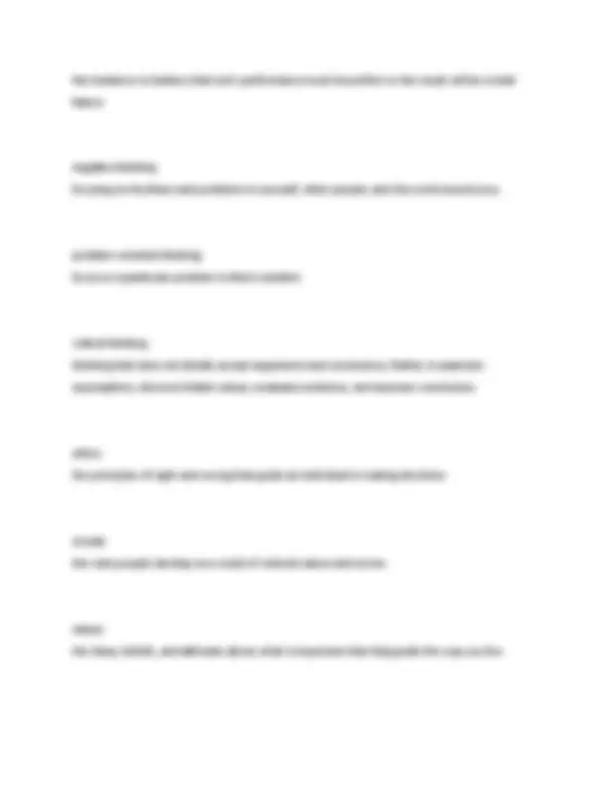
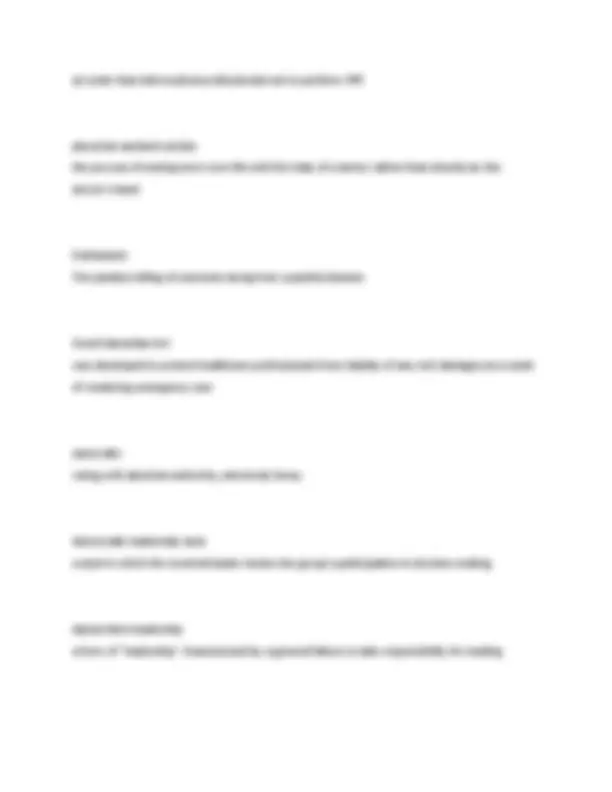
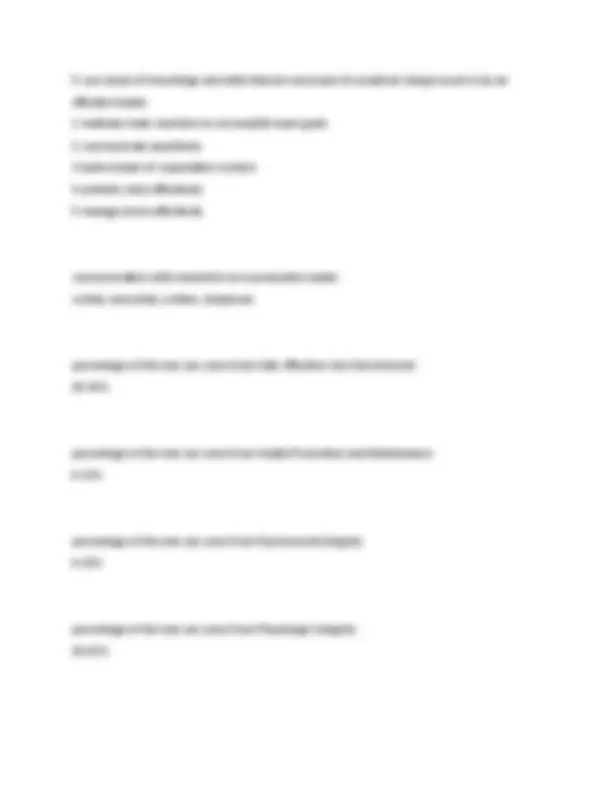
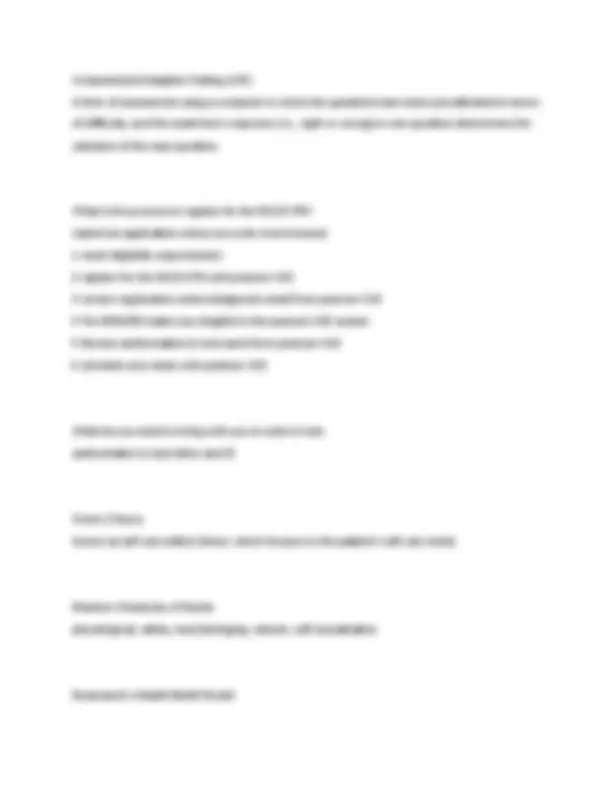
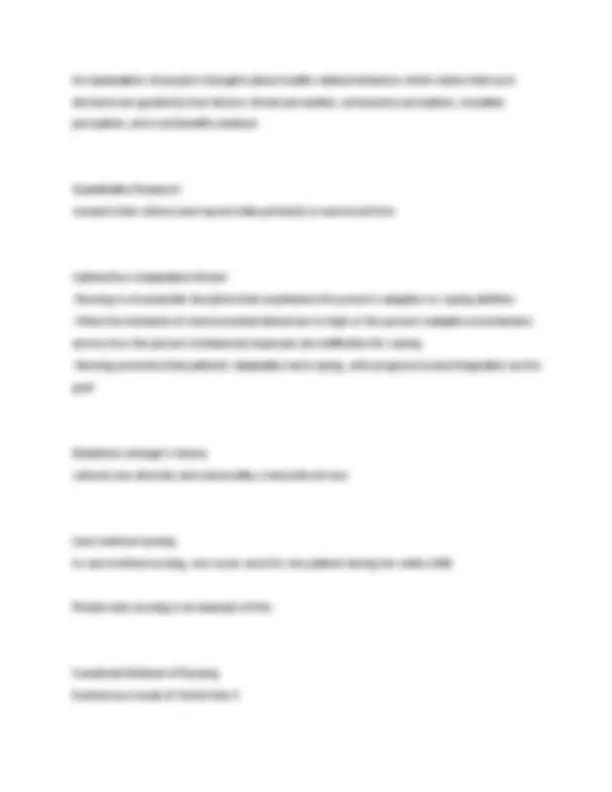
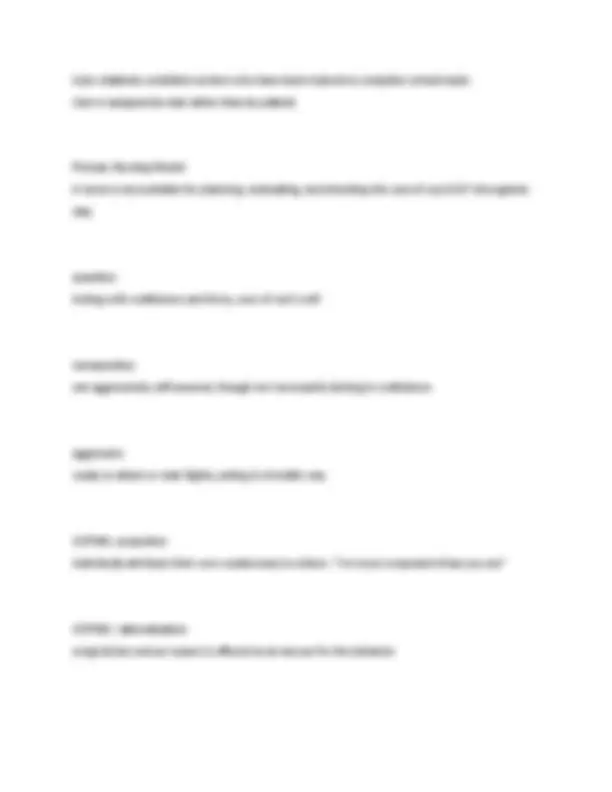
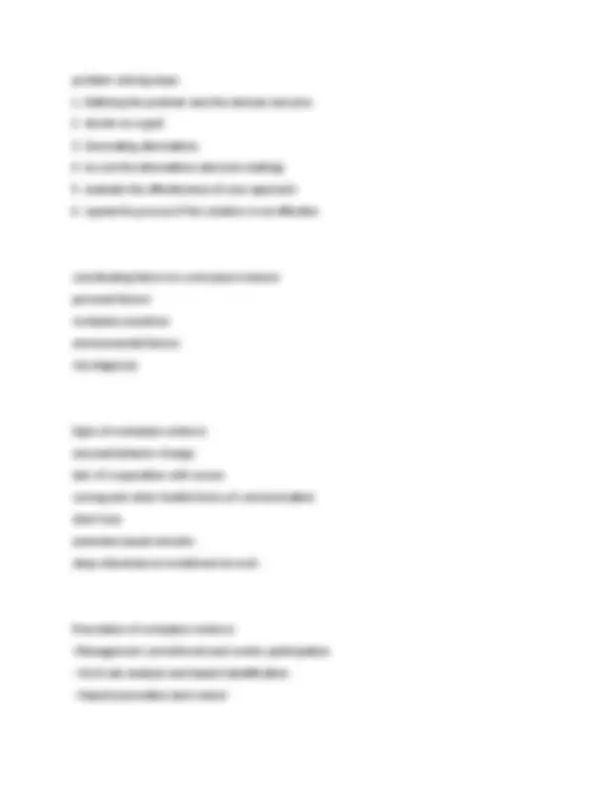
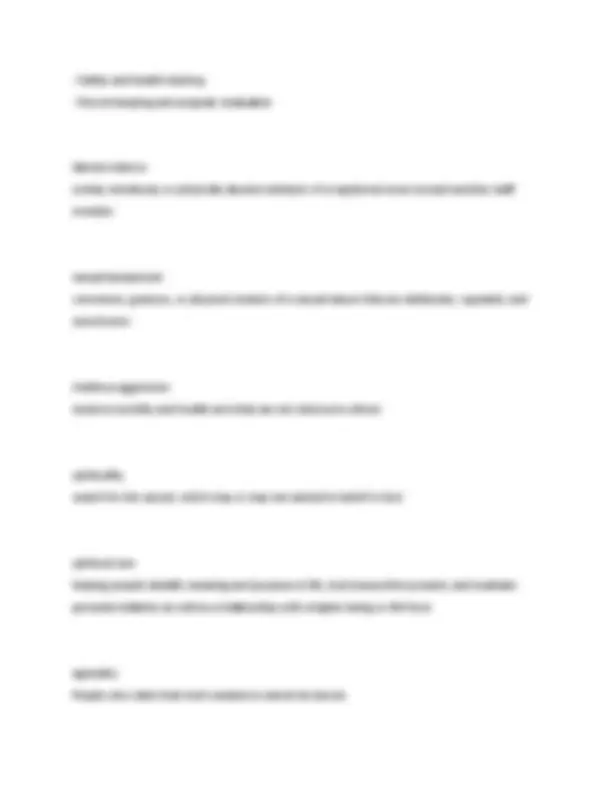
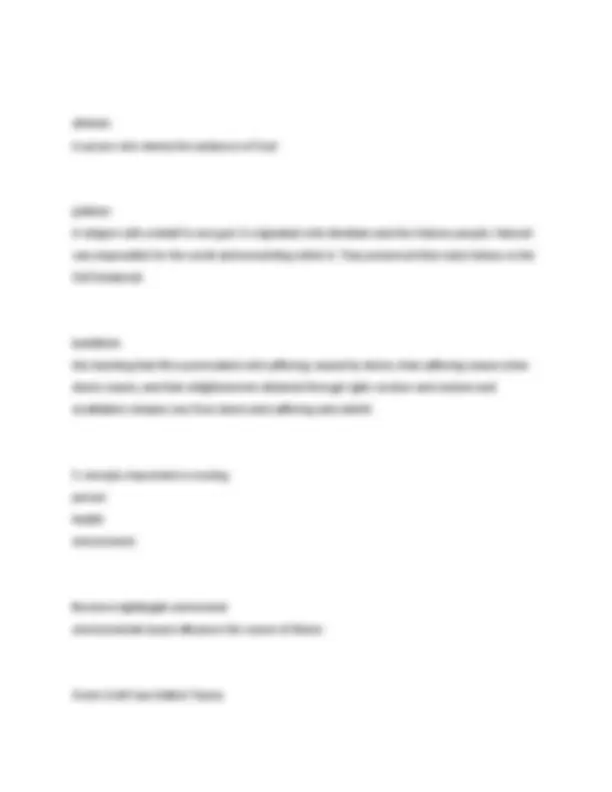
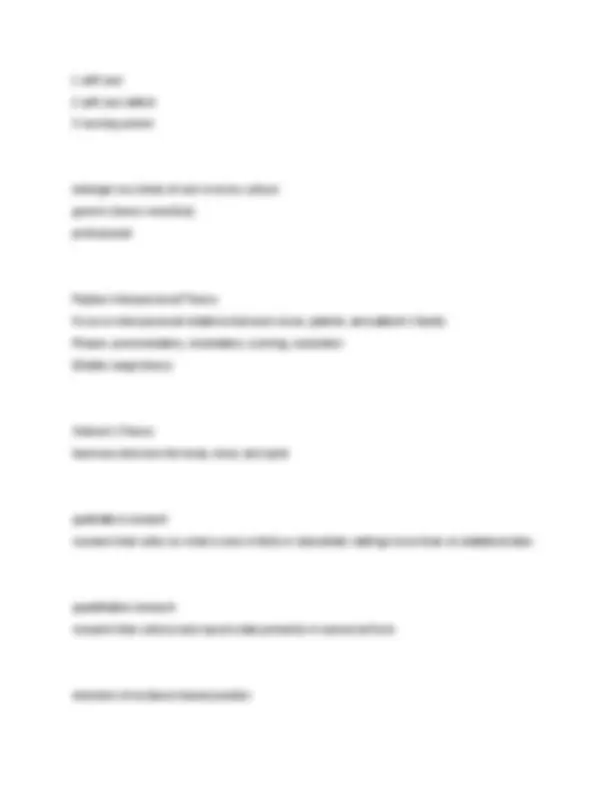
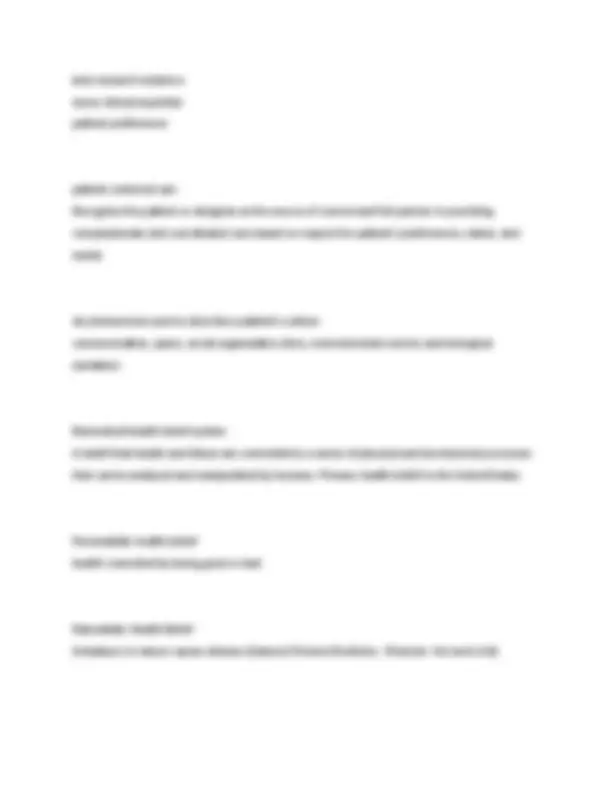



Study with the several resources on Docsity

Earn points by helping other students or get them with a premium plan


Prepare for your exams
Study with the several resources on Docsity

Earn points to download
Earn points by helping other students or get them with a premium plan
Community
Ask the community for help and clear up your study doubts
Discover the best universities in your country according to Docsity users
Free resources
Download our free guides on studying techniques, anxiety management strategies, and thesis advice from Docsity tutors
TEST BANK FOR SUCCESS IN PRACTICAL VOCATIONAL NURSING 8TH EDITION BY KNECHT What is the primary goal of the NAPNES Standards of Practice and Educational Competencies? To improve educational achievement for licensed practical/vocational nurses and ultimately enhance care for citizens. Who is the President of NAPNES mentioned in the document? Ann Bauer, LPN. What is the significance of Ruth Davidhizar in relation to NAPNES?
Typology: Exams
1 / 28

This page cannot be seen from the preview
Don't miss anything!





















What is the primary goal of the NAPNES Standards of Practice and Educational Competencies? To improve educational achievement for licensed practical/vocational nurses and ultimately enhance care for citizens. Who is the President of NAPNES mentioned in the document? Ann Bauer, LPN. What is the significance of Ruth Davidhizar in relation to NAPNES? She is acknowledged for her untiring efforts and is the Dean of the Bethel College School of Nursing. What role does NAPNES play in the field of practical/vocational nursing education? It provides a forum, meeting place, and decision-making body to set educational standards. What are the intended recipients of the guidelines established by NAPNES? Educators, students, prospective employers, and consumers. What are professional behaviors for practical/vocational nurses characterized by?
Adherence to standards of care, accountability for actions, and use of legal and ethical principles. What is one expected outcome for graduates of practical/vocational nursing programs? To demonstrate professional behaviors of accountability and professionalism according to legal and ethical standards. What is one competency that practical/vocational nursing graduates must attain? Comply with ethical, legal, and regulatory frameworks of nursing as outlined in their state's LP/VN nurse practice act. What is the importance of lifelong learning for practical/vocational nurses? It is essential for maintenance of competence and enhancement of current knowledge and skills. How should practical/vocational nurses demonstrate accountability? By being accountable for nursing care provided by themselves and/or directed to others. What role does a practical/vocational nurse play in relation to health care consumers? They function as advocates for health care consumers, maintaining confidentiality as required. What factors should practical/vocational nurses identify that impact their role in health care delivery?
What is the expected impact of the new standards on nursing curricula? To assist educators in the development, implementation, and evaluation of practical/vocational nursing curricula. What is the relationship between NAPNES and practical/vocational nursing educators? NAPNES collaborates with educators to enhance nursing education and standards. What is the significance of the phrase 'life long self-development activities' in nursing? It emphasizes the importance of continuous education and skill enhancement for nurses. How do the standards help prospective employers? They provide clarity on the appropriate utilization of practical/vocational nurses. What is one of the responsibilities of practical/vocational nurses according to the standards? To maintain accountability for their actions and the care they provide. What is communication in the context of nursing? The process by which information is exchanged between individuals verbally, non-verbally, in writing, or through information technology. Why are communication abilities important in nursing?
They are integral and essential to the nursing process, demonstrating caring, compassion, and cultural awareness. Who are the key participants in the nursing communication process? The licensed practical/vocational nurse, other members of the nursing and healthcare team, clients, and significant support persons. What is the expected outcome for nursing graduates regarding communication? To effectively communicate with patients, significant support persons, and members of the interdisciplinary health care team using interpersonal and therapeutic communication skills. List one competency that demonstrates effective communication in nursing. Utilize effective communication skills when interacting with clients, significant others, and members of the interdisciplinary health care team. What is the purpose of assessment in nursing? To collect and process relevant data to appraise the client's health status. What does a holistic assessment include? Physical, developmental, emotional, psychosocial, cultural, spiritual, and functional status. What is the significance of initial assessment in nursing? It provides a baseline for future comparisons to individualize client care.
List one competency related to planning in nursing. Utilize knowledge of normal values to identify deviations in health status to plan care. What is the importance of effective communication in establishing relationships in nursing? It promotes positive outcomes and establishes a trusting relationship. How should nurses communicate relevant information? By ensuring the information is accurate, complete, and communicated to appropriate health care personnel. What is the role of information technology in nursing communication? To support and communicate the planning and provision of client care. What is meant by maintaining client confidentiality in nursing? Protecting the privacy of client information during communication and documentation. What is the significance of documenting assessments and interventions? It provides a record of client progress and supports communication among health care team members. What types of data should nurses assess related to client health status?
Basic physical, developmental, spiritual, cultural, functional, and psychosocial needs. What is the role of collaboration in nursing planning? To ensure that assessment data is effectively used to plan and revise patient care based on established nursing diagnoses. What is the ultimate goal of the nursing process? To promote positive outcomes for clients and their support persons. What is the role of the licensed practical/vocational nurse (LP/VN) in formulating a nursing care plan? The LP/VN contributes to the formulation of a nursing care plan for clients with non-complex conditions and in a stable state, in consultation with the registered nurse and in collaboration with the client or support persons. How should nursing care needs of clients be prioritized? Nursing care needs of clients should be prioritized based on their individual requirements. What is the LP/VN's responsibility regarding the review of nursing care plans? The LP/VN assists in the review and revision of nursing care plans with the registered nurse to meet the changing needs of clients. What action should the LP/VN take if client care needs change?
How should the LP/VN promote the client's dignity? The LP/VN should provide and promote the client's dignity in all aspects of care. What influences should the LP/VN identify and honor in relation to a client's health? The LP/VN should identify and honor the emotional, cultural, religious, and spiritual influences on the client's health. What is the LP/VN's role in creating a safe environment for clients? The LP/VN should provide a safe physical and psychosocial environment for the client and significant others. What is the LP/VN's responsibility regarding the legal and ethical framework of nursing practice? The LP/VN must implement the prescribed care regimen within the legal, ethical, and regulatory framework of practical/vocational nursing practice. How can the LP/VN assist clients in coping with health changes? The LP/VN can assist clients and significant support persons to cope with and adapt to stressful events and changes in health status. What is involved in managing care as an LP/VN? Managing care involves the effective use of human, physical, financial, and technological resources to achieve client outcomes while supporting organizational outcomes.
What is the LP/VN's role in directing care? The LP/VN implements patient care at the direction of a registered nurse, licensed physician, or dentist, and may direct aspects of care to unlicensed assistive personnel (UAP). What competencies demonstrate the LP/VN's ability to coordinate care? Competencies include assisting in the coordination and implementation of an individualized plan of care for clients and significant support persons. How should the LP/VN supervise UAPs? The LP/VN should supervise and evaluate the activities of UAPs and other personnel as appropriate within the state's legal and regulatory framework. What is the LP/VN's accountability regarding care directed to UAPs? The LP/VN maintains accountability for outcomes of care directed to qualified UAPs. How should nursing activities be organized by the LP/VN? Nursing activities should be organized in a meaningful and cost-effective manner when providing care. What is the LP/VN's role in accessing resources for clients? The LP/VN assists clients and significant support persons to access available resources and services.
do no harm four components of autonomy The patient thought through the facts, decided on surgery based on independent thinking, acted based on a personal decision, voluntarily decided to have the surgery, critical thinking an advanced way of thinking, a problem-solving method, and more What do you need to think critically? involves collecting and analyzing data to make a decision 4 levels of thinking knowledge comprehension application analysis knowledge ability to recall and repeat information
comprehension ability to basically understand information, recall it and identify examples of that information application being able to use learned material in new situations analysis able to break down complex information into its basic parts and relate those parts to the whole picture habitual thinking Involves any routine we do that is important, but that does not require us to think hard about how to do it random thoughts multiple short scenes and thoughts come and go through the mind and have no particular purpose or goal ruminative thinking the recurring intrusion of thoughts about stressful events all-or-nothing thinking
living will A document that indicates what medical intervention an individual wants if he or she becomes incapable of expressing those wishes. Durable medical power of attorney Legal written designation making another person responsible for one's medical decisions intentional tort A wrongful act knowingly committed. unintentional tort negligence and malpractice assault unjustified attempt or threat to touch someone battery to cause physical harm to someone libel written defamation
slander spoken defamation LPNs responsibilities regarding HIPPA protection of privacy ignorance of nursing law is no excuse negligence careless neglect, often resulting in injury malpractice Failure by a health professional to meet accepted standards 3 types of consent Informed, Expressed, Implied 4 areas to prove negligence duty, breach of duty, damages, and proximate cause DNR (do not resuscitate)
5 core areas of knowledge and skills that are necessary for practical charge nurse to be an effective leader 1 motivate team members to accomplish team goals 2 communicate assertively 3 build a team of cooperative workers 4 problem solve effectively 5 manage stress effectively communication skills needed to be a productive leader verbal, nonverbal, written, telephone percentage of the test can come from Safe, Effective Care Environment 28 - 40% percentage of the test can come from Health Promotion and Maintenance 6 - 12% percentage of the test can come from Psychosocial Integrity 9 - 15% percentage of the test can come from Physiologic Integrity 29 - 61%
Computerized Adaptive Testing (CAT) A form of assessment using a computer in which the questions have been precalibrated in terms of difficulty, and the examinee's response (i.e., right or wrong) to one question determines the selection of the next question. What is the process to register for the NCLEX-PN? submit an application where you wish to be licensed 1 meet eligibility requirements 2 register for the NCLEX-PN with pearson VUE 3 receive registration acknowledgment email from pearson VUE 4 The BON/RB makes you elegible in the pearson VUE system 5 Receive authorization to test eamil form pearson VUE 6 schedule your exam with pearson VUE What do you need to bring with you in order to test authorization to test letter and ID Orem's Theory known as self-care deficit theory which focuses on the patient's self care needs Maslow's Hierarchy of Needs physiological, safety, love/belonging, esteem, self-actualization Rosenstock's Health Belief Model